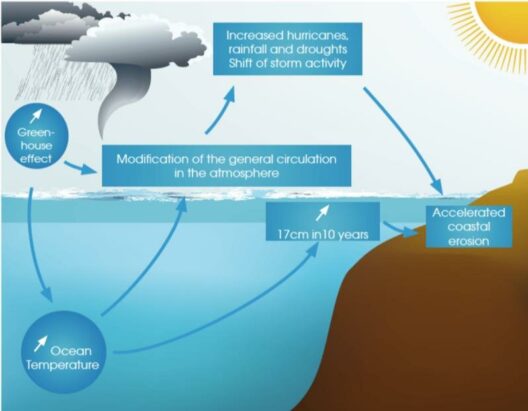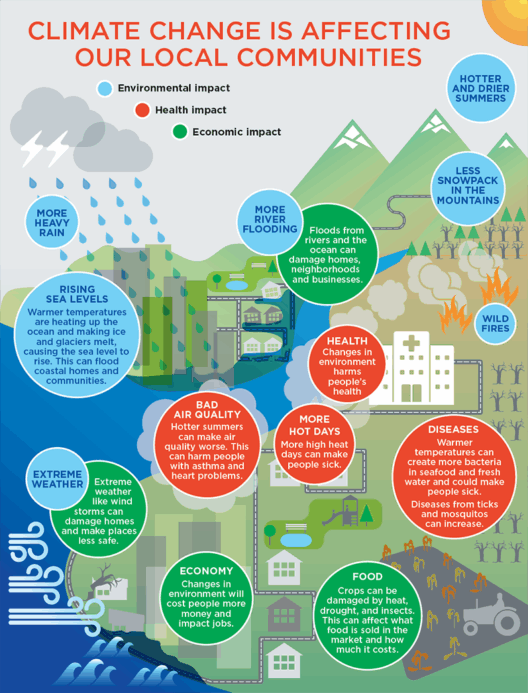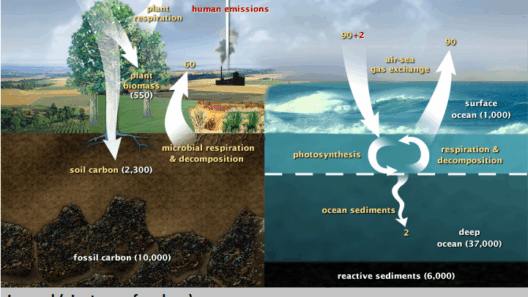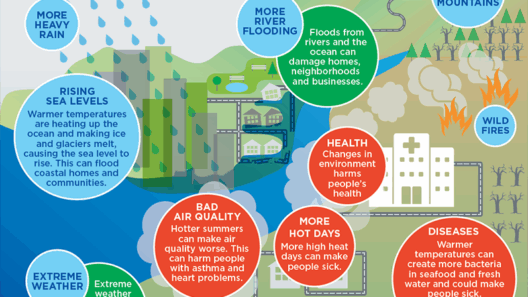Solar radiation is a critical component of Earth’s climate system, fundamentally influencing weather patterns, ocean currents, and ecosystems. The harsh sunlight beams down onto our planet, driving processes that maintain life but also catalyze dramatic environmental changes. This interplay between solar energy and climate constitutes a complex relationship that merits a closer examination.
At the outset, it is important to comprehend the nature of solar radiation itself. The Sun emits a vast spectrum of electromagnetic radiation, and most of it reaches Earth’s atmosphere. This range encompasses ultraviolet (UV), visible, and infrared (IR) radiation. Each band of this spectrum holds significance, affecting everything from human health to plant growth, not to mention planetary energy balance. The Sun’s energy is finite yet abundant, with solar radiation driving the photosynthesis process, enabling plants to convert light energy into chemical energy. This serves as the foundation of food webs and ecosystems that sustain life.
However, the Sun’s radiant energy does not distribute uniformly across the globe. Variations in the intensity of solar radiation are influenced by numerous factors, including latitude, time of day, and atmospheric conditions. The equatorial regions bask in constant sunlight, while polar areas experience extreme seasonal changes in solar exposure. These discrepancies lead to diverse climates, from frigid tundras to arid deserts, shaping biome distributions and weather patterns across the globe.
The Earth’s atmosphere plays a crucial role in regulating solar radiation. Atmospheric gases, aerosols, and cloud cover interact dynamically with incoming solar energy. A phenomenon known as the greenhouse effect exemplifies how certain gases, such as carbon dioxide and methane, trap heat in the atmosphere. When solar radiation enters the atmosphere, some energy is absorbed and re-radiated as infrared radiation. Greenhouse gases absorb this infrared energy, effectively insulating the planet and leading to a warming effect. While this natural process is vital for sustaining life—leading to what is often termed the “Goldilocks zone”—an excess of greenhouse gases, primarily due to human activities like burning fossil fuels, has engendered climate change, resulting in an assortment of potentially cataclysmic consequences.
In this context, solar radiation management (SRM) has emerged as a critical topic in climate discussions. SRM refers to a suite of geoengineering approaches designed to reflect a portion of the Sun’s light and heat back into space, thereby mitigating the impacts of global warming. Methods include stratospheric aerosol injection, cloud seeding, and space-based reflectors. While these innovative strategies hold promise, they are fraught with uncertainties and ethical considerations. The idea of tinkering with Earth’s energy balance evokes an array of ecological, geopolitical, and social implications that cannot be overlooked.
Additionally, on a more granular level, solar radiation plays a crucial part in the water cycle. Evaporation, driven by solar energy, transforms liquid water into vapor, thus contributing to humidity levels and precipitation patterns. The amount of solar radiation absorbed by ocean surfaces directly influences sea temperatures and currents. These currents, such as the Gulf Stream, relay warm water across vast distances, affecting climate systems and weather events globally. The ramifications of altered solar radiation patterns can lead to extreme weather, rising sea levels, and disrupted ecosystems, which pose significant risks to biodiversity and human communities.
In understanding the fiery relationship between solar radiation and climate, it is essential to consider the long-term stability of ecosystems. Solar radiation impacts soil health, influencing processes like nutrient cycling and plant growth. In this symbiotic relationship, plant species adapted to local climatic conditions rely on solar energy to thrive. Changes in solar radiation due to climate change can disrupt these delicate ecosystems, leading to shifts in species distribution and biodiversity loss. Furthermore, invasive species may flourish under new conditions, exacerbating the challenges faced by native flora and fauna.
Compounding the problem, climate change perpetuated by the enhanced greenhouse effect often leads to extreme weather phenomena, including hurricanes, droughts, and wildfires. These events disrupt not only natural ecosystems but human societies as well, leading to food insecurity and displacement. The repercussions on agriculture, forestry, and fisheries are profound, challenging food production systems and threatening livelihoods globally. This creates a vicious loop: increased climate variability driven by solar radiation affects Earth’s systems, which in turn exacerbates human impacts on the climate.
Solar radiation is critical in the discourse surrounding renewable energy, particularly solar power. As a clean energy source, solar power harnesses sunlight to generate electricity, offering an alternative to carbon-intensive energy systems. The promise of solar energy technologies is vast, presenting opportunities for sustainable development and mitigation of climate change. Advancements in photovoltaic cells and solar thermal systems allow for increased efficiency and reduced costs, making solar energy increasingly viable. However, the deployment of such technologies must also consider their environmental impact, from habitat disruption during installation to resource extraction for materials.
In conclusion, the relationship between solar radiation and climate is intricate and multifaceted. Solar energy serves as a powerful driver of environmental processes, while also posing significant challenges in the era of climate change. Recognizing this interconnection is essential for fostering a sustainable future. A nuanced understanding of solar radiation can empower us to make informed decisions about resource management, energy production, and environmental conservation. As our planet faces unprecedented changes, a shift in perspective towards appreciating the role of solar radiation may very well unlock solutions to the pressing climate crisis. While the flames of the Sun continue to illuminate our world, it is our responsibility to harness that energy wisely and responsibly, ensuring the longevity of both our planet and its inhabitants for generations to come.







